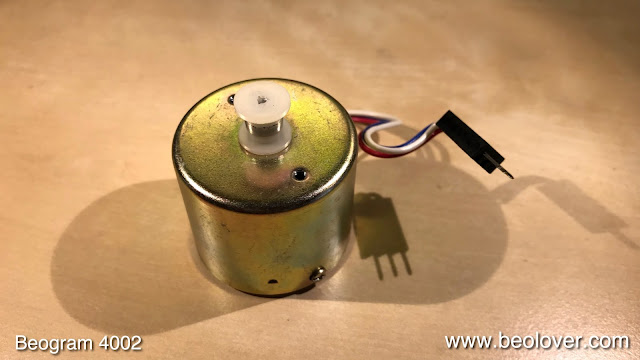Another Beogram 4002 DC motor arrived for restoration:
As usual the first step was to extract the bearings to do an oil infusion on them under vacuum:
The bearings are the two small brass donuts on the black pad. I immersed them in motor oil and pulled a vacuum:
Immediately vigorous bubbling started indicating that the infusion process had started. These bearings were especially thirsty since it took about 48 hrs for the bubbling to stop. Usually, it only takes about 24 hrs or less.
Once the bubbling had stopped I removed the bearings from the oil
and put the motor back together for testing. This shows the bearings back in their places:
I installed the motor into one of my 4002s and setup the Beolover RPM device:
It allows the logging of the RPM for extended periods of time. Perfect for validating the RPM performance and spotting intermittent RPM deviations. This graph shows the result of my measurements on this motor:
The blue curve was measured with a 0.47uF value installed for C10 in the motor control system. As you can see the curve is a bit 'rocky' indicating some overcompensation of the motor control feedback system. Installing 10uF as C10 was able to tamper this behavior to a perfectly smooth curve. It is interesting to note that some motors do not need this, while others do. The last motor that I restored was measured with the 0.47uF value in place and it did not exhibit the fluctuations....I guess this explains why some Beograms came from the factory with the 0.47uF cap in place while others came with the 10uF value. I could even imagine that the engineers at B&O in the 70s were a bit confused by this motor behavior and they vacillated between having 0.47 and 10uF installed at the factory.







No comments:
Post a Comment
Comments and suggestions are welcome!